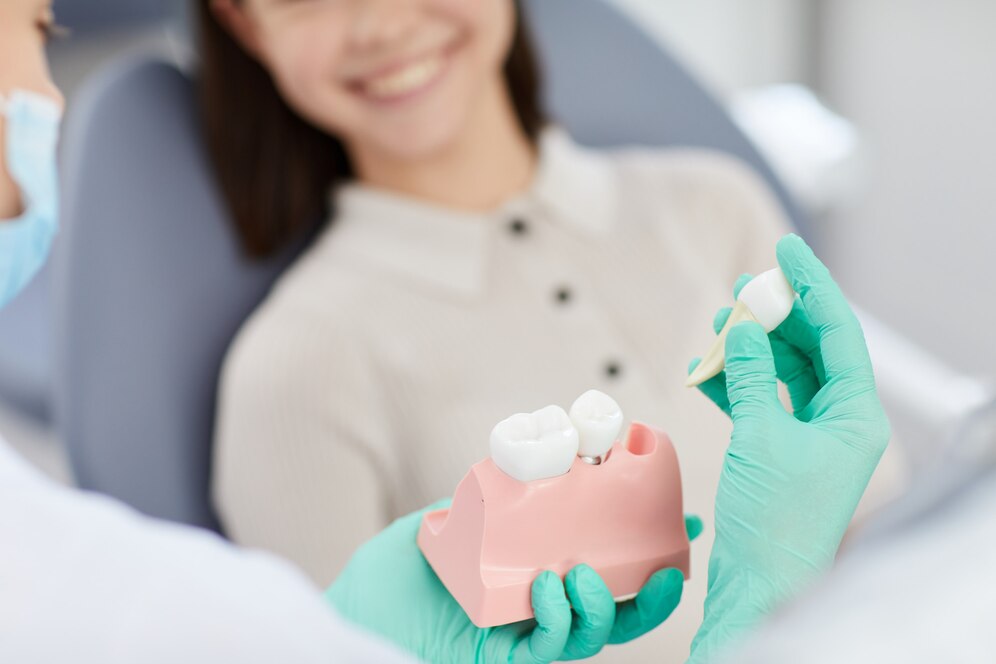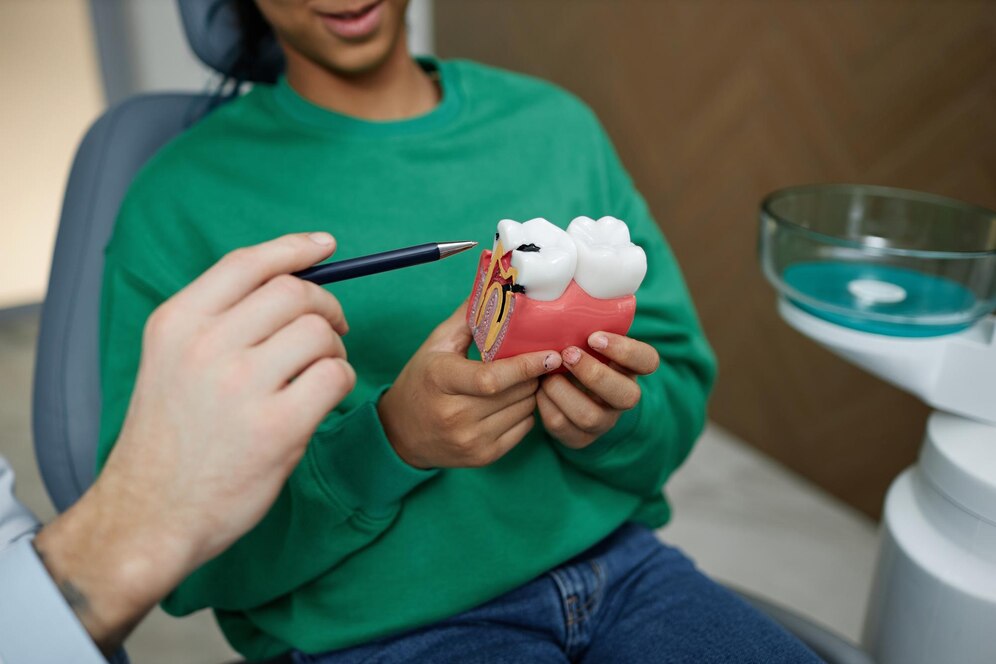Table of Contents
ToggleDental implants in Melbourne stand as a significant achievement in restorative dentistry. They provide durable, functional, and aesthetically pleasing replacements for missing teeth, restoring smiles and confidence for millions across Australia. However, as with any medical intervention, dental implants carry certain risks. Among the most pressing concerns for both patients and dental professionals is the possibility of infection developing around the implant – a condition collectively termed peri-implant disease. Effectively managing this risk is absolutely critical for the long-term success of implant treatments. This article explores peri-implant disease, outlining robust prevention tactics, methods for early detection, and current management protocols.
Understanding the Enemy: What is Peri-Implant Disease?
Peri-implant disease isn’t one single condition; it’s a spectrum of inflammatory issues impacting the tissues surrounding an implant. It typically starts as peri-implant mucositis. Here, inflammation is limited to the soft gums around the implant. Signs like redness, swelling, or bleeding during brushing might appear. Fortunately, mucositis is usually reversible if tackled promptly through better oral hygiene and professional cleaning.
Without intervention, mucositis can unfortunately advance to peri-implantitis. This represents a much more serious problem. The inflammation penetrates deeper, causing progressive destruction of the bone supporting the dental implant price. Such bone loss can eventually destabilise the implant, potentially leading to its failure. What causes these conditions? Primarily, bacterial biofilms – essentially, sticky colonies of bacteria – accumulating on the implant surface. This process mirrors how plaque triggers gum disease (periodontitis) around natural teeth.
Why do some individuals develop peri-implant disease after teeth implants melbourne cost while others don’t? Several factors contribute:
- Inadequate Oral Hygiene: Insufficient cleaning permits bacterial plaque accumulation.
- Previous Periodontitis: Individuals with a history of gum disease face a heightened risk.
- Smoking: Tobacco use compromises healing and the body’s immune defences, substantially raising infection risk and hampering treatment outcomes.
- Uncontrolled Systemic Diseases: Conditions like poorly managed diabetes can adversely affect healing processes and inflammatory responses.
- Implant-Related Issues: Sometimes, factors like implant positioning, component fit, or leftover cement post-restoration can create niches favouring bacterial growth.
- Genetic Factors: An individual’s genetic makeup might predispose them to stronger inflammatory reactions.

Prevention: Building a Strong Defence from Day One
Minimising infection risk isn’t just a cheap dental implants post-operative concern; it starts well before implant placement and demands lifelong vigilance. A proactive strategy is key.
- Careful Patient Selection and Planning: A thorough review of medical history, current dental health (especially gum condition), and lifestyle factors (like smoking) is fundamental. Any existing gum disease needs successful treatment before considering implants. Utilising advanced imaging ensures precise planning for optimal implant placement within healthy bone, reducing surgical trauma and potential future issues.
- Skilful Surgical Technique: The placement surgery itself must follow strict sterile procedures to avoid contamination. Expert handling minimises tissue damage, which in turn promotes quicker, healthier healing.
- Unyielding Patient Commitment to Oral Hygiene: This point truly cannot be stressed enough. Patients must grasp that implants demand consistent, lifelong maintenance. This means effective brushing twice daily and meticulous cleaning between teeth using appropriate tools – floss, interdental brushes, or water flossers designed for implant care. Your dental team provides personalised guidance.
- Consistent Professional Maintenance: Regular dental check-ups and professional cleanings are indispensable. These appointments allow the dental team to monitor implant health, remove stubborn calculus buildup missed by home care, verify the restoration’s fit, and refresh oral hygiene practices. Visit frequency depends on individual risk, typically every 3 to 6 months.
- Positive Lifestyle Changes: Taking steps like quitting smoking and maintaining excellent control over conditions such as diabetes significantly bolsters long-term implant health.
Early Detection: Staying Vigilant
Identifying problems in their early stages vastly increases the likelihood of successful intervention and saving the implant. Vigilance is required from both patients and clinicians.
- Spotting Clinical Signs: Be watchful for gum redness, swelling, or colour changes around the implant. Bleeding during gentle probing by the dentist or during home care is a critical indicator. Pus discharge signals an active infection. An increase in the pocket depth around the implant points to tissue breakdown. While pain isn’t a constant feature, tenderness can occur. An implant feeling loose is usually a late, serious sign indicating substantial bone loss.
- The Diagnostic Process: During examinations, dentists gently probe around implants, checking for bleeding and measuring pocket depths. X-rays play a vital role in tracking bone levels over time, revealing any loss characteristic of peri-implantitis. Occasionally, microbial tests might help pinpoint specific bacteria driving the infection.

Management Strategies: Intervening Effectively
The chosen treatment path hinges on diagnosing either peri-implant mucositis or the more advanced peri-implantitis.
- Managing Mucositis: Treatment concentrates on curbing inflammation and eradicating the bacterial source. This usually involves intensive reinforcement of oral hygiene techniques, thorough professional cleaning (debridement) to clear plaque and calculus from the implant, and sometimes, short-term use of an antimicrobial mouth rinse (e.g., chlorhexidine).
- Tackling Peri-implantitis: Due to bone loss, things get a bit complicated.
- Non-Surgical Options: Similar to mucositis care, this includes meticulous cleaning of the implant surface, often needing specialised tools. Antibiotics might be applied locally within the pocket. Though sometimes helpful for early-stage issues, non-surgical methods frequently fall short in resolving deeper pockets or significant bone destruction.
- Surgical Intervention: When non-surgical treatments prove inadequate, surgery might be necessary. Typically, this involves lifting a gum flap for direct access to clean and detoxify the contaminated implant surface thoroughly. Depending on the bone defect’s shape and size, regenerative techniques using bone grafts and membranes might be employed to try and regrow lost bone. For advanced cases marked by severe bone loss and a mobile implant, removing the implant (explantation) might be the only way to eliminate the infection definitively.
- Supporting Therapies: Systemic antibiotics can be prescribed alongside other treatments, especially for more aggressive infections. Lasers are also under investigation for their potential role in decontaminating implant surfaces, though conclusive long-term data is still emerging.
Looking Ahead
Ongoing research actively seeks ways to further mitigate peri-implant disease risk with affordable dental implants Melbourne. Areas of focus include developing novel implant surfaces that deter bacteria, enhancing diagnostic tools for earlier and more accurate detection, and discovering new therapeutic agents.
A Partnership for Success
While dental implants cost Melbourne provide outstanding benefits, their enduring success depends critically on managing infection risk effectively. Peri-implant disease poses a real threat, yet it’s largely preventable and certainly treatable, particularly with early detection. Ultimate success hinges on a robust partnership: an informed dental team working closely with a diligent, committed patient. Through meticulous planning, precise execution, dedicated home care, regular professional oversight, and timely action when needed, we can confidently navigate the risks, cost of tooth implant, and help ensure dental implants provide healthy, functional smiles for years ahead.


